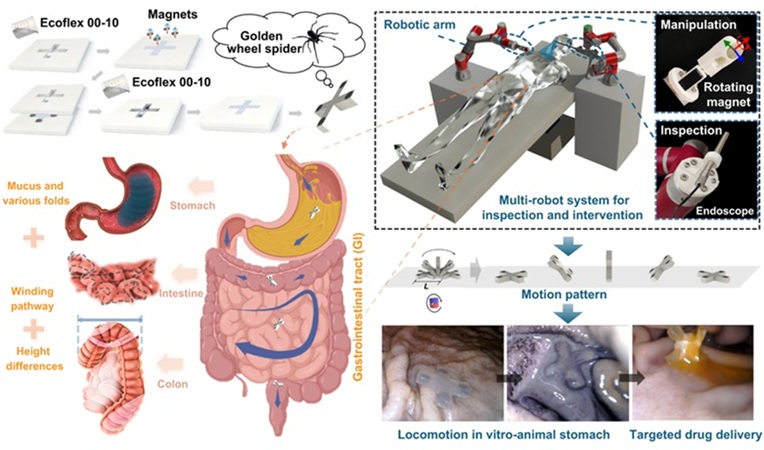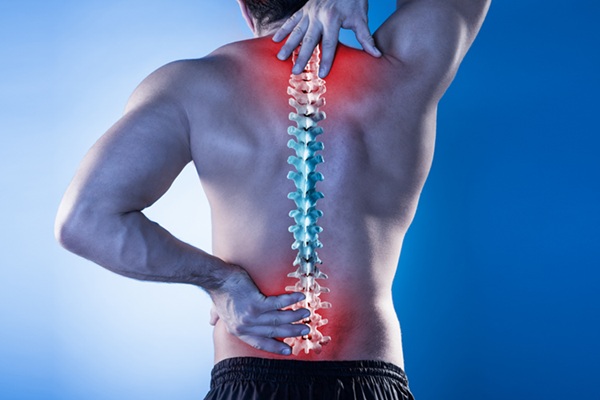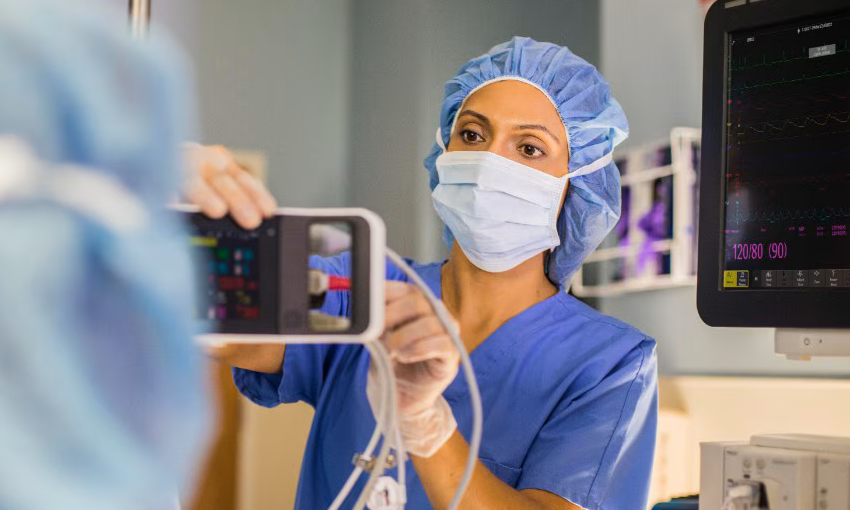Single Therapy Session Helps Cure Acute Insomnia 
|
By HospiMedica International staff writers Posted on 07 Jun 2015 |
A simple one-hour cognitive behavioral therapy (CBT) session has helped to cure 73% of people suffering from acute insomnia, according to a new study.
Researchers at Northumbria University (Newcastle, United Kingdom) conducted a pragmatic parallel group randomized controlled trial involving 40 adults (mean age 33 years) defined as suffering from acute insomnia disorder, who reported no previous exposure to CBT for insomnia and who were not currently taking any medication for sleep. Participants were equally randomized to two groups, with nine males and eleven females in each. The study group underwent a single 60–70 minute session of CBT, with an accompanying self-help pamphlet; the control group had no treatment.
The CBT session included sleep education and instruction on individual differences in “sleep need” at different times of life. The researchers also introduced the principle of sleep restriction, which encourages the individual to spend only the time in bed required for actual sleep. All participants completed sleep diaries and the Insomnia Severity Index (ISI) survey a week before therapy, and based on their recorded sleep diaries, were then prescribed a time to go to bed and a time to rise to improve sleep efficiency.
The participants continued to maintain their sleep diaries and completed another ISI survey one month following treatment. The results showed that were no between-group differences on baseline ISI scores or subjective sleep continuity. But within one month of the therapy session, 60% of the participants in the CBT group reported improvements in their sleep quality; within three months, this had increased to 73%. In the control group, just 15% reported improved sleep. The study was published on June 1, 2105, in SLEEP.
“Chronic insomnia is a considerable health burden both on the individual and the economy, and has been linked to the development of, or worsening of, a number of physical and psychiatric conditions,” said lead author professor of sleep science Jason Ellis, PhD, director of the Northumbria Centre for Sleep Research. “There are numerous advantages to treating insomnia during an acute phase. If successful there is potential for significant savings in terms of long-term healthcare, lost productivity and accidents.”
The self-help pamphlet handed out to participants presented a strategy involving the three actions needed for the individual to recognize and act upon the symptoms of insomnia. These included Detect—how to record their sleep diary; Detach—how to control stimulus that could lead to disrupted sleep; and Distract—instructions on how to use cognitive control and imagery to distract their mind.
Related Links:
Northumbria University
Researchers at Northumbria University (Newcastle, United Kingdom) conducted a pragmatic parallel group randomized controlled trial involving 40 adults (mean age 33 years) defined as suffering from acute insomnia disorder, who reported no previous exposure to CBT for insomnia and who were not currently taking any medication for sleep. Participants were equally randomized to two groups, with nine males and eleven females in each. The study group underwent a single 60–70 minute session of CBT, with an accompanying self-help pamphlet; the control group had no treatment.
The CBT session included sleep education and instruction on individual differences in “sleep need” at different times of life. The researchers also introduced the principle of sleep restriction, which encourages the individual to spend only the time in bed required for actual sleep. All participants completed sleep diaries and the Insomnia Severity Index (ISI) survey a week before therapy, and based on their recorded sleep diaries, were then prescribed a time to go to bed and a time to rise to improve sleep efficiency.
The participants continued to maintain their sleep diaries and completed another ISI survey one month following treatment. The results showed that were no between-group differences on baseline ISI scores or subjective sleep continuity. But within one month of the therapy session, 60% of the participants in the CBT group reported improvements in their sleep quality; within three months, this had increased to 73%. In the control group, just 15% reported improved sleep. The study was published on June 1, 2105, in SLEEP.
“Chronic insomnia is a considerable health burden both on the individual and the economy, and has been linked to the development of, or worsening of, a number of physical and psychiatric conditions,” said lead author professor of sleep science Jason Ellis, PhD, director of the Northumbria Centre for Sleep Research. “There are numerous advantages to treating insomnia during an acute phase. If successful there is potential for significant savings in terms of long-term healthcare, lost productivity and accidents.”
The self-help pamphlet handed out to participants presented a strategy involving the three actions needed for the individual to recognize and act upon the symptoms of insomnia. These included Detect—how to record their sleep diary; Detach—how to control stimulus that could lead to disrupted sleep; and Distract—instructions on how to use cognitive control and imagery to distract their mind.
Related Links:
Northumbria University
Latest Critical Care News
- Smart Biosensors Could Be Game-Changer for Wearable Health Tech
- Low-Cost Medical Device Stops Postpartum Hemorrhages
- Non-Invasive Wearable Sensor Detects Sweat Biomarker in Low-Perspiration Conditions
- New Autoinjector Could Transform Trauma Care in Severe Bleeding Emergencies
- Portable Light-Based Brain Monitor Improves Dementia Diagnosis
- New Ultrasound Technique Enables Safer Vein Access in Critically Ill Patient
- CVD Risk Prediction Tool Could Guide Statin Therapy
- Wearables Could Revolutionize Pregnancy Monitoring and Detect Abnormalities
- AI Model Identifies AF Patients Requiring Blood Thinners to Prevent Stroke
- Soft Robot Intubation Device Could Save Lives
- Bee-Sting Inspired Wearable Microneedles to Revolutionize Drug Delivery
- Wearable Smart Patch Runs Tests Using Sweat Instead of Blood
- AI Improves Prediction of CKD Progression to End Stage Renal Disease
- First-Of-Its-Kind Online Tool to Revolutionize Treatment of High Blood Pressure
- Temperature-Sensing Patch Enables Early Breast Cancer Detection
- AI Stethoscope Detects Three Heart Conditions In 15 Seconds
Channels
Surgical Techniques
view channel
Micro Imaging Device Paired with Endoscope Spots Cancers at Earlier Stage
Digestive system cancers are among the most common cancers, with hundreds of thousands of new cases and deaths reported annually in the United States. Standard endoscopy, the main diagnostic method for... Read more
Spider-Inspired Magnetic Soft Robots to Perform Minimally Invasive GI Tract Procedures
The gastrointestinal (GI) tract is vital for digestion, nutrient absorption, and waste elimination, but it is also prone to cancers and other serious conditions. Standard endoscopy is widely used for diagnosis... Read more
AI Spine Model Could Reduce Surgical Risks
Nearly 3 in 10 adults in the United States have experienced lower back pain in any three months, making it the most common musculoskeletal pain. Back pain is one of the leading causes of disability worldwide,... Read more
Novel Method Uses Interstitial Fluid Flow to Predict Where Brain Tumor Can Grow Next
Glioblastoma is one of the most aggressive brain cancers, with patients surviving on average only 15 months after diagnosis. Surgery and radiation can temporarily control the tumor, but the disease almost... Read morePatient Care
view channel
Revolutionary Automatic IV-Line Flushing Device to Enhance Infusion Care
More than 80% of in-hospital patients receive intravenous (IV) therapy. Every dose of IV medicine delivered in a small volume (<250 mL) infusion bag should be followed by subsequent flushing to ensure... Read more
VR Training Tool Combats Contamination of Portable Medical Equipment
Healthcare-associated infections (HAIs) impact one in every 31 patients, cause nearly 100,000 deaths each year, and cost USD 28.4 billion in direct medical expenses. Notably, up to 75% of these infections... Read more
Portable Biosensor Platform to Reduce Hospital-Acquired Infections
Approximately 4 million patients in the European Union acquire healthcare-associated infections (HAIs) or nosocomial infections each year, with around 37,000 deaths directly resulting from these infections,... Read moreFirst-Of-Its-Kind Portable Germicidal Light Technology Disinfects High-Touch Clinical Surfaces in Seconds
Reducing healthcare-acquired infections (HAIs) remains a pressing issue within global healthcare systems. In the United States alone, 1.7 million patients contract HAIs annually, leading to approximately... Read moreHealth IT
view channel
Printable Molecule-Selective Nanoparticles Enable Mass Production of Wearable Biosensors
The future of medicine is likely to focus on the personalization of healthcare—understanding exactly what an individual requires and delivering the appropriate combination of nutrients, metabolites, and... Read moreBusiness
view channel
Philips and Masimo Partner to Advance Patient Monitoring Measurement Technologies
Royal Philips (Amsterdam, Netherlands) and Masimo (Irvine, California, USA) have renewed their multi-year strategic collaboration, combining Philips’ expertise in patient monitoring with Masimo’s noninvasive... Read more
B. Braun Acquires Digital Microsurgery Company True Digital Surgery
The high-end microsurgery market in neurosurgery, spine, and ENT is undergoing a significant transformation. Traditional analog microscopes are giving way to digital exoscopes, which provide improved visualization,... Read more
CMEF 2025 to Promote Holistic and High-Quality Development of Medical and Health Industry
The 92nd China International Medical Equipment Fair (CMEF 2025) Autumn Exhibition is scheduled to be held from September 26 to 29 at the China Import and Export Fair Complex (Canton Fair Complex) in Guangzhou.... Read more












